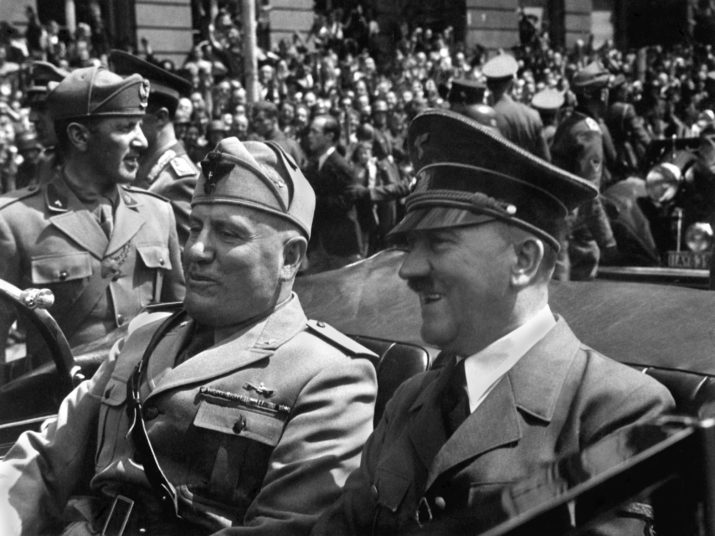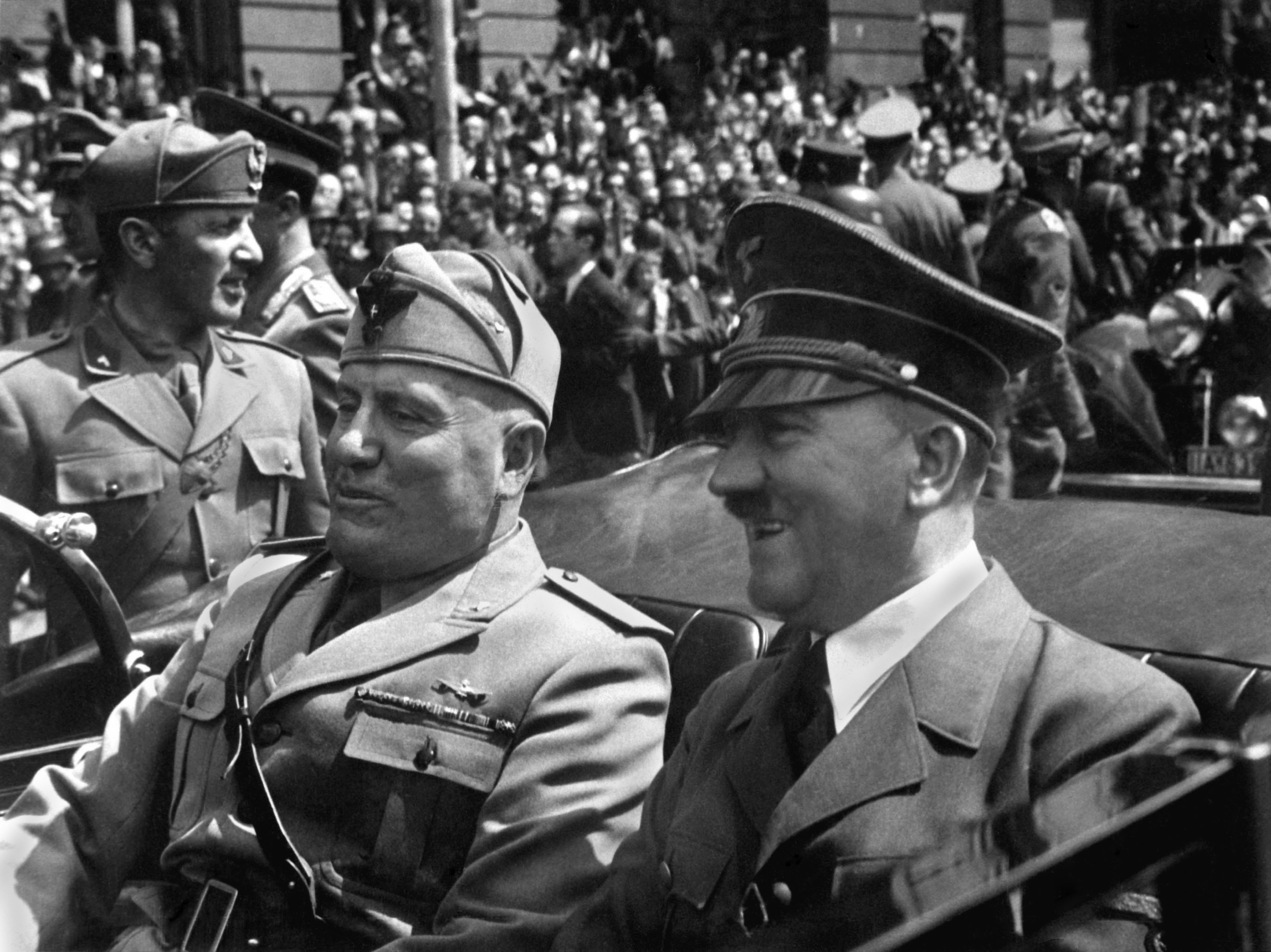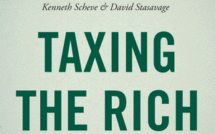

The Past Makes Its Appearance Once Again[1]
Italy, more than any other European Union country, has supported Donald Trump and has more confidence in him concerning world affairs.[2] This is a deeply disturbing and inexcusable reaction considering Italy’s history and its people’s familiarity with their past.
The importance of studying history can’t be emphasized enough. “Any man’s view of his own era is limited,” writes controversial author Yukio Mishima, who was considered for the Nobel Prize on three occasions only to be overlooked for his right-wing tendencies, “and he has great difficulty in trying to obtain a comprehensive picture of his time. Precisely because of this, then, the comprehensive picture offered by history both provides information and constitutes a pattern for one’s guidance.” Mishima goes on to note that, “A man who lives bound by the limits of the minute-to-minute present is able, by means of the broad vision offered by time-transcending history, to avail himself a comprehensive picture of his world and so correct his own narrow view of things.”[3]
That said, the human being is fallible and even those undoubtedly intelligent and well-read can fail to learn from the past with dire consequences. Hillary Clinton was described by her former high school history teacher as someone who as a 15-year-old could “knock Donald Trump out of the box” in her grasp of the histories of Japan, India, China, the Soviet Union, and Pakistan.[4] But she and the Democratic party should have paid closer attention to American history, and indeed colonialism, to better understand the views ingrained in the millions of white Americans who contributed to Donald Trump’s election,[5] and help predict the “White Lash”[6] that would follow President Obama’s presidency, which may turn out to be but a progressive anomaly. If the relatively recent Civil Rights Movement in which Clinton herself played a minor role as a law student working for activist Marian Wright Edelman[7] was not enough to warn of persisting racism in the country, then the Civil War that is constantly reinvoked either through the continued use of the Confederate Flag or through threats of a second civil war pending a Clinton win,[8] should have been sufficiently didactic in this respect.
Then there are those who can be led astray by what they find in the past’s folds. Benito Mussolini understood history to be an essential way to “explore the depths, on the basis of historical fact, the profound sources of our national life and of our character, and to compare our capacities with those of other people.”[9] He therefore ensured he was well-versed in ancient and modern history, even writing a biography on the medieval revolutionary Hussites.[10] However, his seemingly “comprehensive” approach to the past belies the firm traditionalism that is inherently linked with fascism (and paradoxically linked with futurism) and his reliance on the single period of Imperial Rome to guide his propaganda and policy: the word “fascist” itself derives from the Latin fascis, which was a birch rod carried by proto-policemen called lictors.[11] Then there was of course the use of the Roman salute,[12] references to the Mediterranean as Mare Nostru—“Our Sea”—and numerous other symbols and rhetoric taken from the Roman Empire, which defined his dictatorship. In his autobiography, he explicitly writes that his “journey means the strengthening of Italian power descended from Ancient Rome,” and calls the Fascisti’s struggle one for a “new Imperial Rome.”[13] If his intentions weren’t explicitly clear to his contemporaries in life, then he made sure that in death future generations would understand the true nature of his ambitions—in a Latin text found beneath the obelisk erected in his honor in the Foro Italico, he is heralded as a Roman emperor.[14] This is a dangerous approach to the study of history for reasons stated by Mishima: “If one is to learn from history, one should not concentrate solely upon a single portion of an era but rather make a thorough investigation of the many complex and mutually contradictory factors that make the era what it was.”[15]
This is a dangerous approach to the study of history for reasons stated by Mishima: “If one is to learn from history, one should not concentrate solely upon a single portion of an era but rather make a thorough investigation of the many complex and mutually contradictory factors that make the era what it was.”
Mussolini’s skewed image of the past and his romanticizing of Imperial Rome without considering its flaws and understanding the reasons for its downfall, ultimately helped lead to his downfall. Mishima himself, despite being one of the great intellectuals of the 20th century, did not seem to heed his own warning and was similarly another traditionalist with his ideological roots set firmly in militaristic feudal Japan. This led him in 1970 to famously commit ritual suicide after a failed coup to reinstate the Emperor as Japan’s leader.
These are of course extreme examples. Those who have a strong education with a focus on history will be exponentially better prepared to make sound, rational decisions in both their interests and in the interests of others, their judgment based not only on previous mistakes, but also previous successes. Those who refuse to or are incapable of looking back and speak instead only of the present and the future use rhetoric lined with ignorance. And ignorance is at the root of disaster. Donald Trump himself is an example of this, proudly admitting he doesn’t read,[16] but the demographic fault lines of the American election support this as well: this year, it became clear that there is a growing gap between white voters with college degrees, who tend to vote in favor of Democrats, and those without degrees, who tend to vote more Republican. Furthermore, rural voters more often favor Republicans, while urban voters favor Democrats.[17] And, unfortunately, American rural areas suffer from widespread poverty, limited opportunity, and malnutrition, which ensure significantly lower college-attendance rates compared to urban counterparts.[18] Until drastic political and economic reforms are made to remedy this problem, the less informed, less-educated will continue to allow history to repeat its most shameful moments, to allow us to relive past traumas. Had the people of these rural areas been provided with the means for a decent education, most would not have no doubt voted against the unqualified, fear-mongering Trump whose policies largely work against them. Consider his tax policies alone, which favor the wealthy.
So, to a certain extent, the American people who cast their vote for Trump can be forgiven for their “narrow view.” Not only because of the dire situation of the areas in which they mostly live, but because the nation itself is young and American tradition is not one that emphasizes looking back. On the contrary, being a country historically populated by immigrants seeking a fresh start, it emphasizes the exact opposite: a severance with the past was (and no doubt continues to be) commonplace for the millions who wished to build a new life in a new country. It was all about assimilation, for which the past is always a hindrance. It was all about the future. Above all else, money-making was (and most certainly continues to be) the fundamental enterprise, as theoretically, all had the chance to elevate themselves to the upper echelons of society now that they had freed themselves from the caste-like systems of the Old World, its monarchies, and its oligarchies.
In the face of this, the genocide of Native Americans has been largely disregarded, allowing echoes of the shameful breaching of both sovereign and human rights to be heard in the Dakota pipeline protests, teaching the history of slavery and its impact has been avoided,[19] allowing racism to remain “at the core” of the American people,[20] and countless other shameful moments have been nearly forgotten as well. Included here are arguably the most devastating acts of cruelty in human history: the dropping of not one, but two atomic bombs on a defeated nation. Nagasaki has faded in the official narrative which dominates the opinion of most Americans thanks in part to the catastrophe sharing the day’s news along with the Soviet advance and President Truman not even mentioning it in his August 9th radio address.[21] Now, this lack of a history-telling tradition has not only helped create someone like Trump, who has always had access to a decent education, but helped condemn us all to a bleak future filled with uncertainty and hatred thanks to those who elected him.
The Italian people who have embraced Trump can’t be similarly forgiven. Unlike in American culture where things (or in many cases people) considered old or attributed to the past are largely discarded in favor of the new, in Italy, age grants importance and value.This helps account for why monuments from even the most shameful moments in the country’s past can be seen alongside those from prouder times. In Rome, fascist buildings are as ubiquitous as ancient, medieval, and Renaissance ones.
This helps account for why monuments from even the most shameful moments in the country’s past can be seen alongside those from prouder times. In Rome, fascist buildings are as ubiquitous as ancient, medieval, and Renaissance ones.
This may also account for much of the controversy in 2013 when mayor Ignazio Marino proposed to tear down the Via dei Fori Imperiale, Mussolini’s iconic boulevard,[22] and why those who openly confront the dictator’s architectural imprint on the city remain a small minority.[23] (Marino himself was criticized for wanting to imprint his own name on the city, and was even half-jokingly compared to Nero).[24]
Furthermore, Italian culture and consciousness is one embedded in the Greco-Roman, fatalistic, cyclical view of history supported by writers such as Herodotus and Thucydides. This is echoed in the common proverb often attributed to George Santayana, “Chi non conosce il propio passato e’ destinato a riviverlo”—“Those who don’t know their past are destined to relive it,”—and in the very concept of the Piazza, each of which contain a historical monument at their center to remind passerby of an important historical event and of the inability to escape the past. So too is it reflected in the standard primary and secondary school curriculum: history is studied from first grade through senior year, with the periods of ancient Egypt, Greece, Rome, the Middle Ages, the Renaissance, the Enlightenment, the Italian unification, and the World Wars emphasized. Despite there being specialized high schools, everything remains contextualized and integrated with history in the relevant specialization. For example, in the liceo artistico, the history of art is emphasized and in the liceo linguistico, the history of languages is emphasized.
So even if the American curriculum does make an effort to bring history to the forefront of the discussion through its social studies programs, emphasis is largely on American history and thousands of publically funded schools across the country still teach creationism[25] (indeed, Trump just elected a creationist as his education secretary).[26] On the contrary, when efforts were made by former Minister of Education Letizia Moratti to remove evolution from the classroom, within a year her reforms were undone.[27] Otherwise, the Italian system is able to tap into the country’s much vaster past made more accessible thanks to the many strata of its cultural landscape and the history-ingrained mindset of its people. This should technically grant the Italian people a wider view of the world and thus a clearer picture of the present and better vision in determining the future.
Otherwise, the Italian system is able to tap into the country’s much vaster past made more accessible thanks to the many strata of its cultural landscape and the history-ingrained mindset of its people. This should technically grant the Italian people a wider view of the world and thus a clearer picture of the present and better vision in determining the future.
But once again, people are fallible and the Italian education system has its own problems rooted in the country’s own poverty, which is the worse it’s been in a decade;[28] as noted above, poverty’s impact in the success of a student cannot be downplayed. So, let’s just say that it’s true that most people’s historical perspectives are limited to only about 50–100 years,[29] whether they are from an Old World country with traditions of history-telling like Italy, or from a New World country with a tradition of past-severance like the United States. Then those Italians who have supported Trump are even more inexcusable, as they don’t even need to look beyond this range to identify two of the most infamous Italian leaders who have both have led the country to disaster in numerous capacities, both of whom are eerily similar to Trump:[30] Mussolini and Silvio Berlusconi.
Italians have historically favored the uomo forte—the strong man—a charismatic leader who delivers promises of progress and prosperity and doesn’t let the democratic system get in his way. This can be seen in Mussolini’s rise in the 20s as well as in Berlusconi’s repeated victories as Prime Minister.[31] Trump very much fits the strong man model, perceived by many Americans as the “wrecking ball”[32] needed break down a corrupt system and return it to greatness (or indeed, to the “white, racist, misogynistic, patriarchy”[33] it once was, a place he favors and that so many like him unfortunately define as “great”). But apparently, the experience with Mussolini and Berlusconi was not enough to teach all the Italian people the dangers of someone like Trump.
It’s easy to forget the continued support of fascist dictator beyond a minority of extremist groups and football hooligans despite the brutality of his regime, the censorship, the invasion of Ethiopia and the use of poison gas and concentration camps, the deportation of thousands of Jews who eventually met their end in Auschwitz and Dachau, and the eventual economic collapse of the country after WWII—despite even the constant reminders of his dictatorship scattered across the country in the form of immediately-recognizable monuments. Berlusconi himself is a reflection of this—in 1994 his political party Forza Italia merged with the Alleanza Nazionale, which has neo-fascist roots. He also has compared himself to the dictator,[34] praising him for “having done good.”[35] He managed to be Prime Minister for nine years regardless, and during his campaigns and tenures support persisted despite his tax fraud, Mafia associations, sex scandals with underage girls, and general misconduct in public office;[36] just as Trump’s misconduct has been excessively criticized by his opponents but largely ignored or indeed celebrated by his followers, many of the Italian people overlooked flaws in Berlusconi which were not necessarily related to political decisions or were perceived as admirable strengths. It took leading the country to bankruptcy in 2011 for Berlusconi to finally be ousted as Prime Minister[37] only for him to run again for the position in 2013 and gain 29.1 percent of votes.
Perhaps this accounts for those who have embraced Trump: those who still see the merits in what Mussolini tried to accomplish and continue to support Berlusconi for upholding the dictator’s memory feel a strong familiarity with the President-elect. Thankfully, these people remain a minority in the country, with 59 percent lacking confidence in Trump concerning world affairs and 52 percent embracing Hillary Clinton during the election. For most, history does repeat itself. But the number of those who think otherwise or perceive the horrors of the past with corrupted ethics is still shocking, especially when seen in the context of the greater world: in the studies conducted, Italy was second only to China in support of Trump. Considering Italy’s long history, its people’s long memory, their recent past, and their effective education system, more than any other European Union country, they should be the ones to oppose Trump, a man who has the capacity to outdo both Mussolini and Berlusconi considering his ideologies, lack of experience, and lack of knowledge.
For now, Trump has the restraints of modern society and the shackles of bureaucracy to stay his heavy hand, but the potentially grave implications of his election remain present regardless. So rather than congratulating his victory, as Prime Minister Matteo Renzi has done[38] not long after condemning him,[39] the reaction to his eventual presidency will hopefully become fiercer. Hopefully, all the Italian people will draw upon the same strength that saw the partisans eventually help end the most explicit form of fascism in their country.
The people of all of Europe, rather than trying to appease Trump in fear of their own economic interests, should listen to Irish senator Aodhán Ó Riordáin’s call to forget investments for one moment in order to condemn a monster.[40] They should help those majority of Americans who voted against Trump to prevent him from acting out another world catastrophe. They should take a keener look back—especially those for whom even the distant past is a recent memory—as the various strands of the past form an invaluable map designating the swiftest routes to a brighter or darker future.
Christopher Impiglia is a writer and editor based in New York. He holds an MFA in Fiction from The New School for Public Engagement and an MA in Medieval History and Archaeology from the University of St Andrews. His work has appeared or is forthcoming in Columbia Journal, Handwritten, and The Inquisitive Eater.
Photo: Hitler and Mussolini in Munich, Everett Historical | Shutterstock
References
[1] “The past makes its appearance once again, with all its mingled dreams and aspirations, the delicate tarnish of falsehood left undisturbed upon its silver.” Yukio Mishima, Runaway Horses, trans. Michael Gallagher (New York, 1990), 29.
[2] “Pew Research Center,” June 27, 2016, http://www.pewglobal.org/2016/06/29/2-obamas-international-image-remains-strong-in-europe-and-asia/confidence-in-leaders-and-candidates-web-version/
[3] Mishima, Runaway Horses, 116.
[4] Adam C. Smith, “What Hillary Clinton’s history teacher in Pinellas Park thinks,” Tampa Bay Times, August 12, 2016, accessed November 30, 2016, http://www.tampabay.com/blogs/the-buzz-florida-politics/what-hillary-clintons-history-teacher-in-pinellas-park-thinks/2289228.
[5] Nate Cohn, “Why Trump Won: Working-Class Whites, The New York Times, November 9, 2016, accessed November 30, 2016, http://www.nytimes.com/2016/11/10/upshot/why-trump-won-working-class-whites.html.
[6] http://www.cnn.com/videos/politics/2016/11/09/van-jones-emotional-election-results-sot.cnn
[7] Amy Chozick, “How Hillary Clinton Went Undercover to Examine Race in Education,” The New York Times, December 27, 2015, accessed November 30, 2016, http://www.nytimes.com/2015/12/28/us/politics/how-hillary-clinton-went-undercover-to-examine-race-in-education.html.
[8] Daniel Marans, “Van Jones Talks to Donald Trump Supporters in Attempt to Avoid New ‘Civil War’,” The Huffington Post, November 5, 2016, accessed November 30, 2016, http://www.huffingtonpost.com/entry/van-jones-trump-supporters-in-gettysburg_us_581dfcc8e4b0e80b02ca5e0d.
[9] Scott, Kenneth. “Mussolini and the Roman Empire.” The Classical Journal 27, no. 9 (1932): 645–57, 646, https://www.jstor.org/stable/3290234?seq=1#page_scan_tab_contents
[10] Benito Mussolini, Giovanni Hus: il veridico (Rome, 1913).
[11] “Fascist: origins in ancient Rome,” The Telegraph, December 24, 2005, accessed November 30, 2016, http://www.telegraph.co.uk/news/1506259/Fascist-origins-in-ancient-Rome.html.
[12] Controversy remains whether the Roman salute was indeed from Ancient Rome, with no pictorial or textual references to it made from the period. It was, however, depicted in iconic references to Ancient Rome in paintings like David’s Oath of the Horatii (1784).
[13] Scott, Kenneth. “Mussolini and the Roman Empire.” The Classical Journal 27, no. 9 (1932): 645–57, 646, https://www.jstor.org/stable/3290234?seq=1#page_scan_tab_contents.
[14] Becky Branford, “Mussolini message to future revealed under Rome obelisk,” BBC News, August 31, 2016, accessed November 30, 2016, http://www.bbc.com/news/world-europe-37230455.
[15] Mishima, Runaway Horses, 115.
[16] Marc Fisher, “Donald Trump doesn’t read much. Being president probably wouldn’t change that.,” The Washington Post, July 17, 2016, accessed November 30, 2016, https://www.washingtonpost.com/politics/donald-trump-doesnt-read-much-being-president-probably-wouldnt-change-that/2016/07/17/d2ddf2bc-4932-11e6-90a8-fb84201e0645_story.html.
[17] Danielle Kurtzleben, “Rural Voters Played A Big Part In Helping Trump Defeat Clinton,” NPR, November 14, 2016, accessed Noveber 30, 2016, http://www.npr.org/2016/11/14/501737150/rural-voters-played-a-big-part-in-helping-trump-defeat-clinton.
[18] Rachael Martin, “Salvaging Education in Rural America,” The Atlantic, January 5, 2016, accessed November 30, 2016, http://www.theatlantic.com/education/archive/2016/01/americas-rural-schools/422586/.
[19] Edward E. Baptist, “Teaching Slavery to Reluctant Listeners,” The New York Times, September 11, 2015, accessed November 30, 2016, http://www.nytimes.com/2015/09/13/magazine/teaching-slavery-to-reluctant-listeners.html.
[20] Rebecca Carroll, “Rebecca Carroll and Van Jones Talk Race and the Race,” New York Magazine, November 13, 2016, accessed November 30, 2016, http://nymag.com/daily/intelligencer/2016/11/rebecca-carroll-and-van-jones-talk-race-and-the-race.html.
[21] Susan Southard, “Nagasaki, the Forgotten City,” The New York Times, August 7, 2015, accessed November 30, 2016, http://www.nytimes.com/2015/08/08/opinion/nagasaki-the-forgotten-city.html.
[22] Clearly, Mussolini had a somewhat hypocritical view of even his favored period in history when he chose to build this four-lane road, destroying much of Imperial Fora, one of the most monumental urban complexes of the ancient city. Ulrika Brand, “Imperial Rome Exhibition Debits at Italian Academy,” Columbia News, February 8, 2001, accessed November 30, 2016, http://www.columbia.edu/cu/news/01/02/imperialRome.html.
[23] Max Page, “The Roman architecture of Mussolini, still standing,” The Boston Globe, July 13, 2014, accessed November 30, 2016, https://www.bostonglobe.com/ideas/2014/07/12/the-roman-architecture-mussolini-still-standing/csZ70EN2fTnUUNqX0kRM9K/story.html.
[24] Elisabetta Povoledo, “Road Through Roman History Creates Colossal Headache,” The New York Times, July 31, 2013, accessed November 30, 2016, http://www.nytimes.com/2013/08/01/world/europe/road-through-roman-history-creates-colossal-headache.html.
[25] Chris Kirk, “Map: Publicly Funded Schools That Are Allowed to Teach Creationism,” Slate, January 26, 2014, accessed November 30, 2016, http://www.slate.com/articles/health_and_science/science/2014/01/creationism_in_public_schools_mapped_where_tax_money_supports_alternatives.html.
[26] “Betsy DeVos Picked As President-Elect Donald Trump’s Education Secretary, IFL Science, accessed November 30, 2016, http://www.iflscience.com/editors-blog/betsy-devos-picked-as-presidentelect-donald-trumps-education-secretary/.
[27] “Scuola, Darwin torna nei programmi,” la Repubblica, April 29, 2004, accessed November 28, 2016, http://ricerca.repubblica.it/repubblica/archivio/repubblica/2004/04/29/scuola-darwin-torna-nei-programmi.082scuola.html.
[28] Gavin Jones, “Poverty in Italy at worst for 10 years in blow for PM Renzi,” The Sydney Morning Herald, July 15, 2016, accessed November 28, 2016, http://www.smh.com.au/world/poverty-in-italy-at-worst-for-10-years-in-blow-for-pm-renzi-20160715-gq6gx0.html.
[29] Tobias Stone, “History tells us what may happen next with Brexit & Trump,” Medium, July 23, 2016, accessed November 28, 2016, https://medium.com/@theonlytoby/history-tells-us-what-will-happen-next-with-brexit-trump-a3fefd154714#.v02gerb56.
[30] Beppe Severgnini, “What a Trump America Can Learn from a Berlusconi Italy,” The New York Times, November 15, 2016, accessed November 27, 2016, http://www.nytimes.com/2016/11/16/opinion/what-a-trump-america-can-learn-from-a-berlusconi-italy.html. Lorraine Berry, “Umberto Eco On Donald Trump: 14 Ways of Looking at a Fascist,” Literary Hub, February 29, 2016, accessed November 30, 2016, http://lithub.com/umberto-eco-on-donald-trump-14-ways-of-looking-at-a-fascist/
[31] Francesco Giumelli and Davide Maneschi, “Why Italians Vote for Berlusconi,” The New York Times, February 26, 2013, accessed November 30, 2016, http://www.nytimes.com/2013/02/27/opinion/global/why-italians-vote-for-berlusconi.html.
[32] Gregory Krieg, “’Suck it up, cupcake!’: Sarah Palin’s 9 most Sarah Palin moments of 2016,” May 30, 2016, accessed November 28, 2016, http://www.cnn.com/2016/05/30/politics/sarah-palin-2016-quotes-suck-it-up-cupcake/.
[33] Charles M. Blow, “Trump: Making America White Again,” The New York Times, November 21, 2016, accessed November 30, 2016, http://www.nytimes.com/2016/11/21/opinion/trump-making-america-white-again.html.
[34] “Silvio Berlusconi compares himself to Benito Mussolini,” The Telegraph, November 9, 2011, accessed November 30, 2016, http://www.telegraph.co.uk/news/worldnews/silvio-berlusconi/8878755/Silvio-Berlusconi-compares-himself-to-Benito-Mussolini.html.
[35] “Silvio Berlusconi praises dictator Mussolini for ‘having done good’”, The Independent, January 27, 2013, accessed November 30, 2016, http://www.independent.co.uk/news/world/europe/silvio-berlusconi-praises-dictator-mussolini-for-having-done-good-8468714.html.
[36] Giumelli and Maneschi, “Why Italians Vote for Berlusconi, http://www.nytimes.com/2013/02/27/opinion/global/why-italians-vote-for-berlusconi.html.
[37] http://www.forbes.com/sites/afontevecchia/2011/11/08/italys-berlusconi-will-resign-after-passing-austerity-bill/#24083d34a4d6
[38] Agustino Fontevecchia, “Italy’s Berlusconi Agrees to Resign After Passing Austerity Bill,” Forbes, November 8, 2011, accessed November 30, 2016, http://www.reuters.com/article/us-usa-election-italy-renzi-idUSKBN1341ID.
[39] Brent Griffiths, “Matteo Renzi takes swipe at Donald Trump,” Politico, October 18, 2016, accessed November 30, 2016, http://www.politico.eu/article/italian-prime-minister-takes-a-swipe-at-trump-during-white-house-visit/.
[40] “Trump is a fascist and I’m embarrassed by the Government’s response,”, The Irish Times, November 18, 2016, accessed November 30, 2016, http://www.irishtimes.com/news/world/us/trump-is-a-fascist-and-i-m-embarrassed-by-the-government-s-response-1.2873639.
Published on December 1, 2016.




